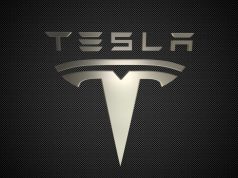Sales conversions are the lifeblood of any successful business and should be actively pursued. By tracking and optimizing their conversion rates, businesses can ensure that their sales efforts are as effective and efficient as possible.
Companies can leverage conversion marketing to track on-site visits and customers’ behaviors, needs, and interests. This allows businesses to create targeted content, optimize their website experiences, encourage repeat purchases, and generate more sales.
Taking this initiative can help businesses identify potential customers interested in specific products or services. Firms can then use this data to tailor offers to meet their customers’ needs.
Here are some ways businesses can increase sales conversion rates:
Analyze the Website and Identify Areas for Improvement
Analyzing a site’s performance should be an ongoing process. Over time, changes in user behavior can provide valuable information about where to focus efforts and how to adjust the design or content of the website accordingly.
To get started, businesses must identify what data needs to be collected to measure performance and analyze user behavior. This could include page loading times, the number of visits per page, bounce rates, conversion rates, average session duration, and more. A good place to begin is by looking at the Google Analytics dashboard, which can provide insights into user behavior and engagement.

Once data has been collected, it is important to create goals for how firms want their website to perform. User feedback and surveys gauge visitors’ perception of the site and what improvements they want. Additionally, analyzing competitor websites can help provide ideas on design elements or features that could be implemented to attract more visitors. It’s also a good idea to use A/B testing to compare different versions of a page to determine which one works best for conversions.
User experience is key to ensuring visitors stay engaged with a site and don’t leave without taking action. Firms should consider how people interact with the website elements and identify difficulties.
For example, if visitors struggle to find specific pages or understand how something works, this could signify a problem area, causing them to leave without converting. Once companies know where the issues lie, they can take steps to make the user experience more enjoyable. This could involve adjusting font sizes, changing the navigation layout, or optimizing page speed.
Mobile users are more likely than desktop users to leave a site and go elsewhere if they have trouble viewing it. In fact, according to Google’s data on this topic, 61% of people wouldn’t return at all, while 40% would visit a competitor instead.
Use A/B Testing To Optimize the Website and Landing Pages
A/B testing is a powerful tool for businesses to gain insights into how customers interact with their products and services. Comparing two versions of the same page or promotional material makes it possible to determine which one performed better. This experimentation can help companies identify which elements of their websites or campaigns work and adjust to increase sales conversion rates.

It can be done on various factors, such as the call-to-action button color, headline text, sales copy, and more. The results of these experiments provide vital information that allows companies to refine their marketing efforts and enhance their customer experience. A recent survey found that more than 50% of businesses do A/B testing on their landing page, which means they’re constantly optimizing for conversions and finding out what works best.
With the right strategy in place, A/B testing can help companies drive up sales conversions effectively. By continually testing and optimizing elements on their website and promotional materials, businesses can ensure they get the best results from their marketing efforts.
It is a cost-effective and efficient way to maximize conversions while minimizing risk. With a well-designed A/B test in place, companies can quickly assess which page elements work best for their target audience, helping them make informed decisions that have the potential to improve overall sales performance.
For instance, companies can test different product page versions to determine which is more effective at converting customers.
Similarly, businesses can experiment with different call-to-action buttons and headlines to see what resonates best with their target audience. The results of these experiments will provide invaluable insights that companies can use to make informed decisions about their marketing strategies.
Personalize Messages and Offers for Potential Customers

For a customer, it’s refreshing when a business takes the time and effort to get to know them individually. Personalized communications from brands not only make them more memorable but also increase consideration for products or services by 76%.
Customers who feel like they are being treated as individuals rather than just another number in the system will be more likely to purchase and become loyal customers. Personalized messages can also help create customer relationships beyond buying and selling. By showing customers that they are valued and appreciated, personalized messages can help build relationships that result in long-term loyalty.
In addition, it creates urgency and fosters a sense of exclusivity. By sending personalized offers only available to specific customers, businesses can create a feeling of scarcity that encourages customers to purchase immediately.
Personalization can be used in many ways, from offering customers discounts on past purchases to providing tailored recommendations for products that fit their unique interests and lifestyle. It’s also essential to ensure that the messages are consistent with the customer’s journey, as this will create a better experience for them.
Wrapping Up

There are many ways to increase a company’s sales conversion rate. Some methods are more effective than others. However, by understanding and implementing some proven techniques, businesses can significantly increase conversions and establish a strong position in the market as industry leaders.









